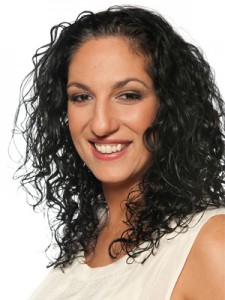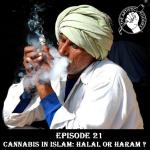Intersections International, a New York-based nonprofit that “works at the intersection of communities in conflict” to “promote peace through dialogue using direct service programs, advocacy, educational and informational outreach,” recently published a report called the “Muslim LGBT Inclusion Project.” The report is a narrative summary of the research done by the project, which started in May 2010 to identify “how, and under what circumstances, the voices of queer Muslims can be better understood and articulated.”
The 70-page report details the nuanced approach taken to hash out a hot-button issue that is too often depicted amongst the global Muslim community in terms of black and white. The approach included initiating one-on-one conversations with Muslim theologians, religious practitioners, academics, and lay people centered on LGBT issues; commissioning three articles by respected scholars in Islamic Studies; and hosting six intimate conversations in cities around the U.S., where individuals across the spectrum of perspectives on the topic congregated to express views, share stories, and explore ways in which the discourse surrounding LGBT issues in the Muslim community could continue to develop.
The chronicle of this project, detailed and explained in the report, revealed reoccurring discursive themes, the most prevalent of them being the parallels between Muslim women’s struggle for gender equality and the LGBT community’s struggle for justice and inclusion. The report affirms that Muslim women and LGBT Muslims aren’t necessarily separate categories, but distinguishes them according to how the two are framed, rather than implying that the category of “Muslim women” excludes LGBT Muslims or vice versa.
Among other things, the appeal to alternate spaces and discourses, when approaching issues of gender and LGBT issues, is a major parallel between the struggle for gender equality and LGBT justice. In fighting for gender equality, Muslim women have been placing themselves outside the confines of predetermined discourses and practices that may undesirably shape their agency. The construction of this alternate “entry point” or space allows for normative assumptions regarding Muslim women to be problematized.
Similarly, the report suggests that LGBT Muslims are finding an “entry point” through the alternate discourses of human and civil rights, rather than through religion. By appealing to human and civil rights first, religious arguments, which often make the discussion a “non-starter,” are shelved. In moving away from arguments of right or wrong, the conversation can be reframed, leaving open the possibility that the conversations will veer back towards religion—focusing on Allah’s and the Prophet’s call to mercy and compassion instead.
Gender segregation is another issue that poses a problem, both for those seeking gender equality and LGBT inclusion. Across the six gatherings, participants expressed a feeling of disconnectedness from their local mosques. In Los Angeles a woman cited that the way prayer spaces in mosques are segregated is a reason for this disengagement. This prompted another participant to ask, “Where do transgender Muslims pray?”
In an article commissioned for the report, Munir Shaikh explores historic practices and precedents related to the gender segregation of LGBT individuals. He writes,
Early on, Muslim societies accommodated various gendered realities and sexual practices. There are hadiths indicating the existence of mukhannaths (who would be called transgender women in today’s parlance) in the Prophet Muhammad’s community … Islamic legal scholars developed a body of opinions on the rights of intersex individuals with respect to marriage and sexual relations, as well as the appropriate placement in congregational prayer (intermediate between the rows of men and women).
In both the struggles for gender equality and for LGBT justice, the authority and interpretation of scripture is often called into question. Muslim women have been questioning interpretations of the Qur’an and hadith. Those seeking LGBT justice also suggest a re-engagement with religious texts, calling for independent readings in order to derive laws or rulings that are free from cultural distortions, male-centric interpretations, and the coercion of power politics.
The report also details interwoven themes that impact these struggles, such as the dichotomy between “East” and “West,” patriarchy, and colonialism.
Munir Shaikh quotes Professor Kecia Ali in “Sexual Ethics and Islam: Feminist Reflections on Qur’an, Hadith and Jurisprudence:”
Those who have appointed themselves the guardians of communal orthodoxy are particularly vigilant on matters considering women and gender—in part because it is in these realms that the construction of Muslim identity in self-conscious opposition to a decadent West takes place.
In the manner which Muslim women have been subject to “ascriptive identifications” that position them as cultural signifiers against the “West,” so too are members of the LGBT Muslim community subject to pre-determined identification in order to maintain the “social order” of the Muslim community.
These aforementioned distinctions between the way “East” and “West” view homosexuality are explained: the “West” sees homosexuality as an identity, while the “East” sees it as merely a practice. This difference in perspectives is attributed, in the report, to the ethical guiding principle in Muslim societies being that which leads to social and familial stability [read: procreation]. In constructing homosexuality as an identity, queer Muslims pose a threat to the “social order” of the community, as do Muslim women who construct their identities from one or more supposedly “Western” concepts, such as feminism or lesbianism.
In the same way, patriarchy also acts as prohibiting factor to free expression around issues of both gender and sexual orientation by allowing elite men to set ideals for society.
Colonialism and the resulting anti-colonialist movements have further colored the struggles towards gender equality and LGBT justice. In her article, Aisha Geissinger notes that in pre-colonial Muslim societies, same-sex sexual desires and acts were openly discussed in Arabic poetry and literature. Participants in the gatherings discussed the historical lack of stigma against the transgendered community and the lack of aversion to same-sex desires in the region of South-East Asia. The negative associations came with the advent of European colonialism, as occupiers perceived same-sex lifestyles in opposition to their concepts of masculinity and civilization. Likewise, colonialist powers attacked the dress, religion and customs of Muslim women as representations of the “backwardness” of Islamic society in order to a leverage adherence to a hegemonic power. Islamist movements used these very things to misappropriate women, and their dress and behavior, as cultural or piety signifiers.
While the report was successful on many fronts, I was disappointed at the scarcity of discourse specifically regarding queer Muslim women, in comparison to the wealth of discourse surrounding transgender and (male) gay issues. The lack of discourse is suggested to be a result of the added layer of navigation for Muslim women who are lesbians, or the lack of clear legal religious rulings on the matter of same-sex sexual acts between women versus those available regarding same-sex sexual acts between men.
However, the report’s illustration of the parallels between the struggle for gender equality and for LGBT justice raises important questions. Do Muslim women who don’t identify as queer create a safe place for those who do, or who represent dissenting voices on queer issues? Does the placement of both Muslim women and LGBT Muslims (not mutually exclusive categories, of course, even if they’re often positioned as such) at the intersection of many types of marginalization allow us to rally together? Or will any attempt to create a movement of solidarity among straight Muslim women and LGBT Muslims render each other silent, as attempts to ally “Western” feminists with Islamic feminists or queer Muslims with the broader LGBT community has often done?













